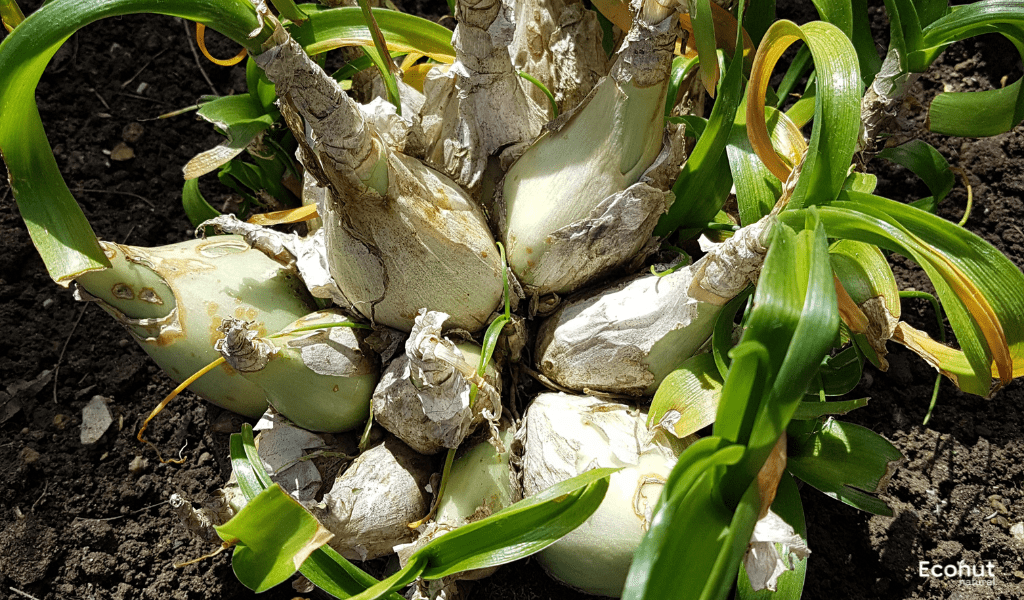Indian Squill (Urginea Indica) is a native of the Mediterranean region and is a perennial herb. Its primary growing habitat is sandy ground with a warm climate near the sea. This little plant can reach a height of two and a half feet. Its blossoms appear before its leaves.
It’s also referred to as sea onion or sea squill because of the way it looks like an onion. The remaining parts are thrown away, and its projecting base and dried interior scales are extracted. Its outer scales are cut and dried. The bulb is taken just after the blooms have appeared and matured. Indian squill is made from dried slices of the bulb Urginea indica Kunth.
Description
Indian squill, which has comparable biological advantages to white squill, degrades it. When there has been rodenticide, red squill is utilized. Similar to digitalis, squill glycosides also exhibit cardiotonic properties, but with slightly less strength.
Botanical Name:
Urginea Indica
Family:
Liliaceae
Leaves:
Smooth-edged, linear-shaped leaves emerge in a rosette configuration from the bulb. These leaves measure 15 to 30 cm in length and 1 to 2.5 cm in width.
Flowers:
April and May are the flowering months for the shrub. The flowers are tiny and have a greenish-yellow color; they are not very showy.
Roots:
Fibrous roots emerge from the bulb’s base. These roots range in length from six to ten inches.
Bulb:
The bulb of the Indian Squill is its most vital component. It’s an underground structure, pear-shaped or conical in shape, about the size of a huge onion. The fleshy coatings of the bulb are papery red or orange-brown in color. These meaty coats are generally hidden in the sand and completely wrap one another.
Seeds:
Once fertilized, the blossoms give way to tiny, black seeds.
Habitat:
Its primary growing habitat is sandy ground with a warm climate near the sea. This little plant can reach a height of two and a half feet. Its blossoms appear before its leaves. Because of its onion-like look, it is also known as sea onion or sea squill.
Parts Used:
- Bulb
- Leaf
Dosage:
- Powder – 150 to 200 mg
Chemical Constituents
Vitamins E, C, and K, potassium, dietary fiber, and folic acid can all be found in wild onions. They also include proteins, calcium, iron, and a number of commercial and healthful substances, including allose, bufadienolides, quercetin, tartaric acid, and paraldehyde.
Other Language Names of Indian Squill (Urginea Indica)
Marathi name – Janglipyajha, Rankada
Punjabi name – Kachwassal, Phaphor
Tamil name – Nasivengayam
Hindi name – Jangli pyaz, Janglikanela, Kanela
English name – Indian Squill
Bengali name – Banpiaaj, Janglipiaaj, Kande
Gujarati name – Janglikanda, Ranakando
Persia name – Piyazedashtiehindi, Kolkanada, Janglikanda,Tokesun
Bengal name – Banpiaaj, Janglipiaaj, Kande
Arabic name – Aansalehindi, Basalefar,Basalelundal
Malayalam name – Kanthanga, Kattulli
Telugu name – Adavithellagadda, Nakkavalligadda
Urdu name – Janglipiyoz
Scientific Classification
| Kingdom | Plantae |
| Clade | Tracheophytes |
| Order | Asparagales |
| Family | Asparagaceae |
Ayurvedic Properties
Rasa (Taste) – Katu (Pungent), Tikta (Bitter)
Guna (Qualities) – Laghu (Light for digestion),Teekshna (Strong)
Vipaka – Katu (Undergoes Pungent taste after digestion)
Veerya (Potency) – Ushna (Hot)
Karma (Actions) – Vata shamaka (reduces vitiated vata disha), Pittavardaka (Increases pitta dosha)
Indian Squill (Urginea Indica) Uses
- Squill juice prepared by heating the roots (15–20 ml is sufficient) has been shown to be highly helpful in treating bronchitis-related conditions such as asthma and cough. Due to its laxative properties, people in Kashmir mix powdered roots with hot water before going to bed.
- When applied to the affected area, squill powder can help treat warts.
- The entire plant is used to treat skin conditions, rheumatism, kidney problems, menstruation problems, and swelling in any area.
- Many disorders can be treated by using the powdered herb as a paste on the affected area of skin.
Indian Squill (Urginea Indica) Benefits
Respiratory Issues:
Indian Squill has been used traditionally to treat a variety of illnesses, including whooping cough, chronic bronchitis, and asthma.
Heart Conditions:
Indian squill has historically been used to treat mild heart failure and irregular heartbeats by stimulating the heart.
Other Uses:
Indian squill has also been used to induce vomiting, thin mucus, and cause fluid retention.
Don’t miss: Mango (Mangifera indica) – Uses, Benefits, Dosage & Side Effects
Indian Squill (Urginea Indica) Side Effects
Heart problems:
Indian Squill’s cardiotonic qualities can result in arrhythmias, abnormal heartbeats, and in extreme situations, even death.
Drug interactions:
Indian Squill may exacerbate heart issues by causing potassium imbalances when combined with drugs such as diuretics and laxatives.
Pregnancy and breastfeeding:
Indian squill should be completely avoided while pregnant or nursing due to unknown safety concerns.
Conclusion
Indian Squill (Urginea Indica) is used to treat lung conditions such as whooping cough, asthma with bronchitis, and chronic bronchitis. Squill is sometimes used to induce vomiting, thin mucus, reduce fluid retention (edema), or induce an abortion. Squill is used in manufacturing as rat poison to manage pests.
FAQS
What is the Indian Squill (Urginea Indica) plant used for?
Squill is used to treat lung conditions such as whooping cough, asthma with bronchitis, and chronic bronchitis. Squill is sometimes used to induce vomiting, thin mucus, reduce fluid retention (edema), or induce an abortion. Squill is used in manufacturing as rat poison to manage pests.
What adverse consequences does Indian Squill have?
It can lead to skin rashes, depression, disorientation, hallucinations, diarrhea, vomiting, headaches, upset stomachs, and irregular heartbeats. There have been cases of more severe adverse effects, including mortality, life-threatening irregular heart rhythms, and seizures.
What advantages does Indian Squill offer?
Squill is used to treat lung conditions such as whooping cough, asthma with bronchitis, and chronic bronchitis. Squill is sometimes used to induce vomiting, thin mucus, reduce fluid retention (edema), or induce an abortion. Squill is used in manufacturing as rat poison to manage pests.

